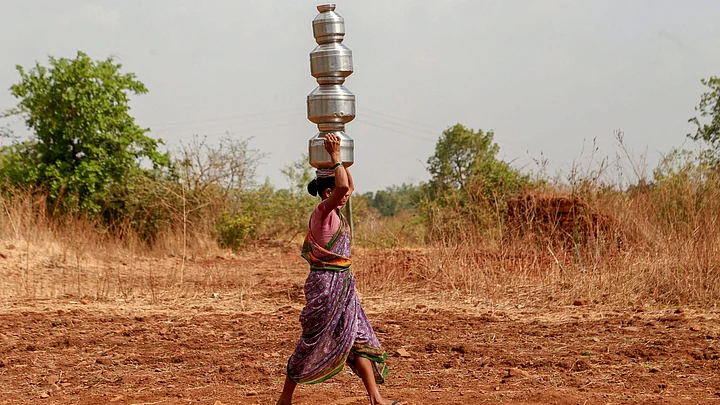The Central Ground Water Board (CGWB) skipped one year in the assessment cycle for the ground water resources that needs to be done every two years and against the proposed 50,000 observation wells to measure ground water level, only 15,851 observation wells are being monitored, the Comptroller and Auditor General (CAG) said in a report.
"Against the proposed number of 50,000 observation wells - that were supposed to be functional by the end of the XII Plan period i.e. 2012-17 - to measure ground water level, a network of only 15,851 observation wells is being monitored as of March 31, 2019," the CAG said in a report on "Ground Water Management and Regulation: Union Government, Department of Water Resources, River Development & Ganga Rejuvenation" tabled in Parliament on Tuesday, 21 December.
CGWB Did Not Perform Ground Water Assessment For 2015
The report contains the observations of the Performance Audit of Ground Water Management and Regulation for the period 2013-18. Matters relating to the period subsequent to 2017-18 have also been included, wherever necessary.
The CGWB had also proposed to undertake real time ground water monitoring in various aquifers across the country through purpose-built wells equipped with digital water level recorders (DWLRs) and telemetry in convergence with the ground water component under National Hydrology Project (NHP).
But it is still being planned as of March 2020, the report said.
"The assessment of ground water resources is to be done every two years. During the audit period, the CGWB conducted such assessments for 2013 and 2017 and published the Reports in June 2017 and July 2019, respectively. The CGWB did not carry out this assessment for 2015 resulting in a gap of four years in assessment between 2013 and 2017," the report pointed out.
It drew attention to the fact that there is a shortage of human resources in scientific and engineering categories in the CGWB and its regional and divisional offices.
"As of March 2019, there was a vacancy of 37.51 percent, 26.93 percent and 26.60 percent in the scientific, engineering, and ministerial categories respectively. In spite of a shortage of technical workforce, some of the Regional Offices had also deputed their technical staff (scientific and engineering) for administrative work," it said.
What Hampered the Monitoring Process?
Situation was equally bad at the state/UT level where there was a vacancy ranging between 12 and 82 per cent in the departments/agencies dealing with ground water at state/UT level.
The CAG report came down heavily on this, saying: "Shortage of human resources posed constraints in the effective discharge of functions of the state/UT agencies. Due to lack in infrastructure and facilities, some of the State agencies were not able to carry out requisite laboratory tests which affected the management of groundwater in the state."
Administrative issues and lack of monitoring was hampered because of such vacancies too. For instance, out of a sample of 328 cases in 18 states where the 'consent to operate' (CTO) granted to a project proponent included a condition which required NOC for ground water extraction, as many as 253 projects (77 per cent) were operating without NOCs.
"In 15 states for which data was made available to audit, 3,189 Bureau of Indian Standards (BIS) licences were issued to packaged drinking water units since 2013, of which in 2,475 cases (78 per cent), the project proponents were operating without obtaining NOCs from CGWA," the report pointed out.
Lack of Coordination Between Centre & States a Problem in Accessing Water Resources
Pointing at the lack of coordination between the Centre and the states/UTs, the CAG report said: "Of the 201 reports included in the (groundwater management) programme, aquifer mapping reports of only 168 districts were shared with respective district administrations till November 2019. Many states did not take action on the recommendations made by the CGWB in the aquifer mapping reports due to constraints such as map scale being too small to locate the areas, non-receipt of funds from CGWB or Central government to implement the reports in the field, etc."
It recommended that the department may ensure that assessment of ground water resources, water level and quality is done at the prescribed intervals so as to maintain current data on the status of ground water in the country and to utilise such data for planning management strategies.
The department may take action to increase the number of observation wells with DWLRs and Telemetry to monitor ground water in line with the targets committed under the Ground Water Management and Regulation Scheme/ National Hydrology Project, it said.
(At The Quint, we question everything. Play an active role in shaping our journalism by becoming a member today.)
